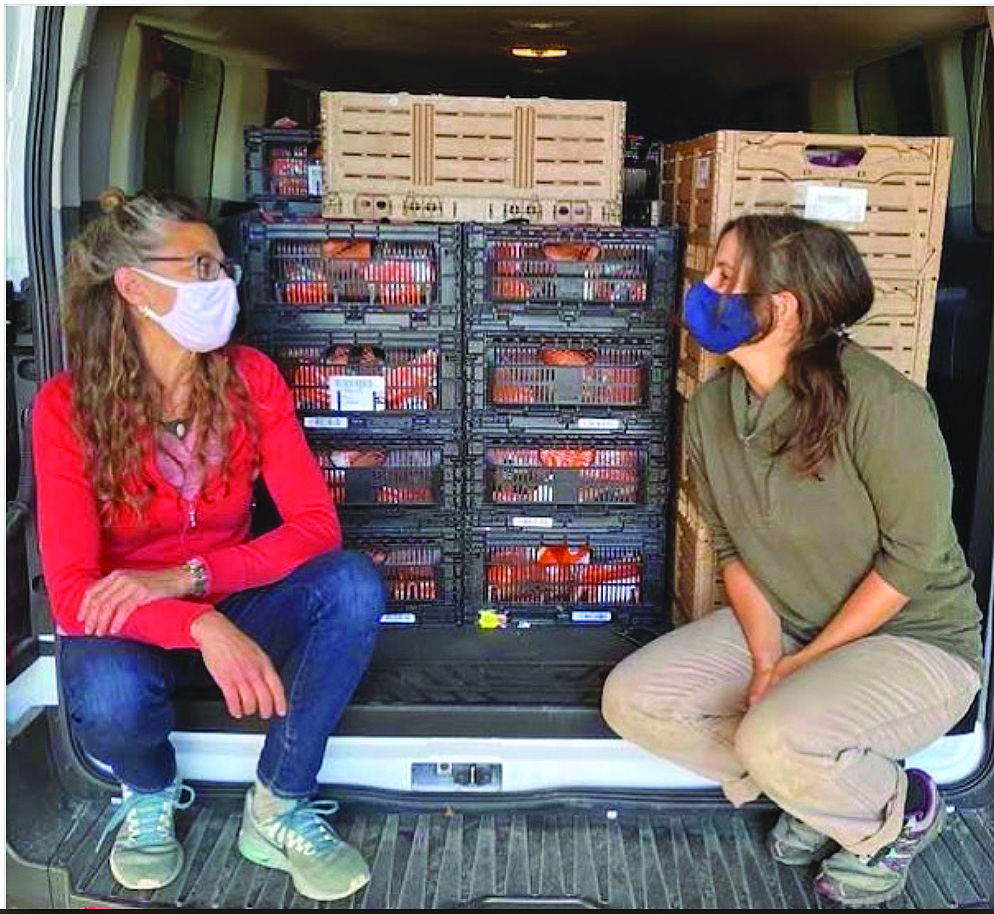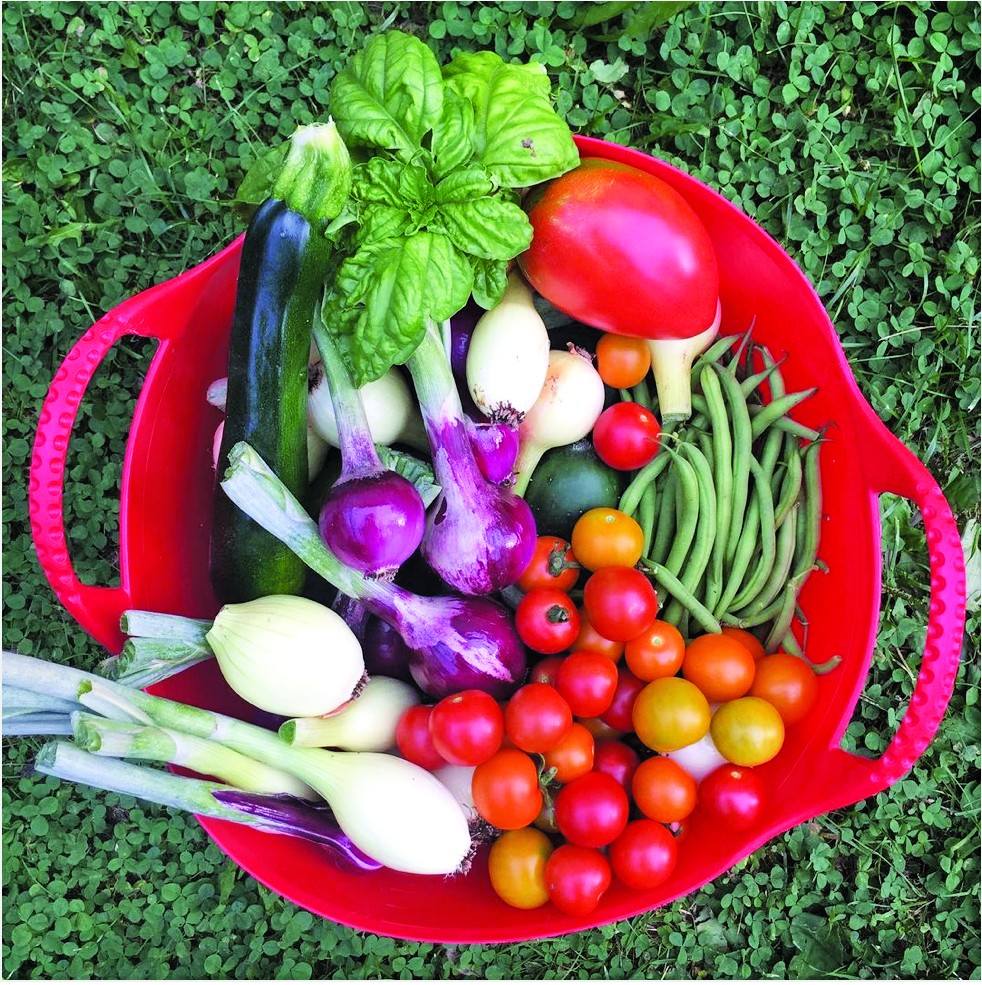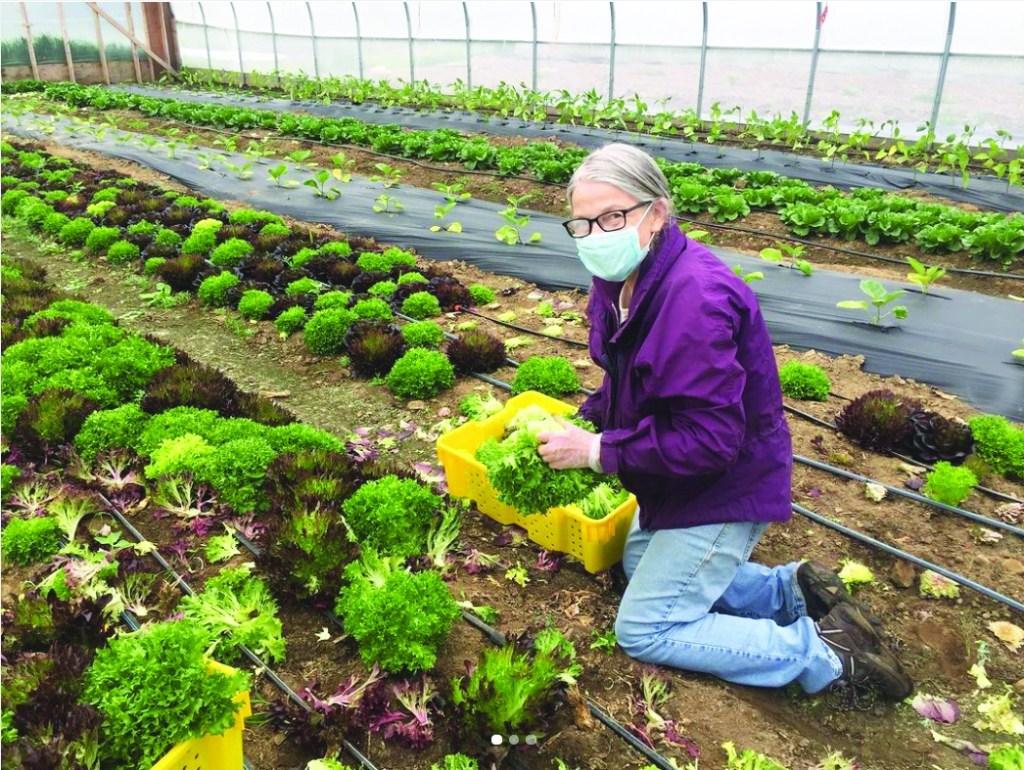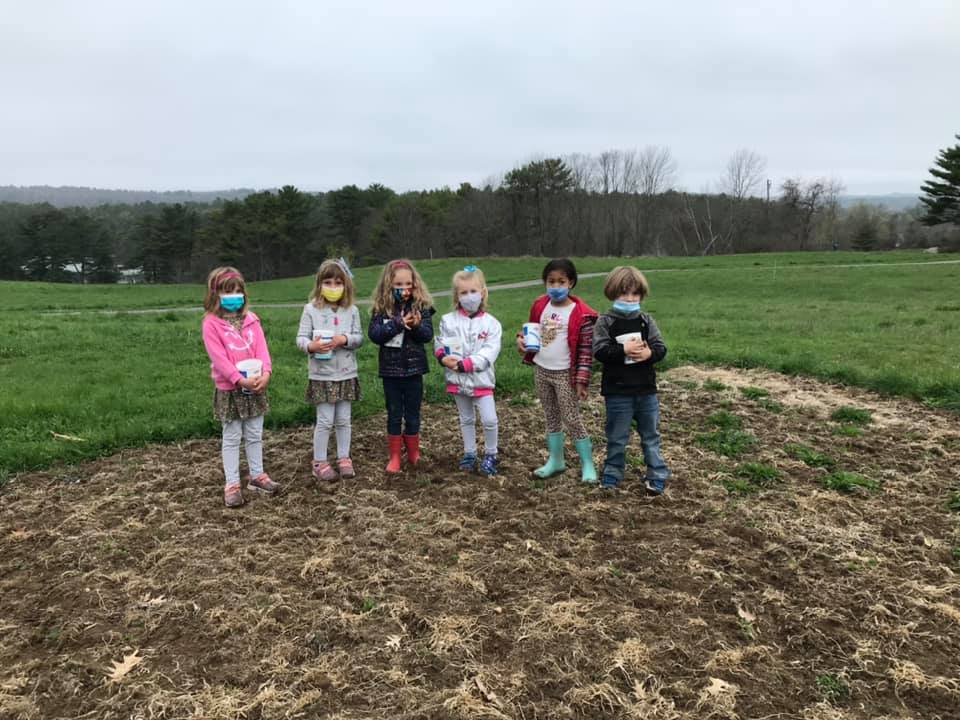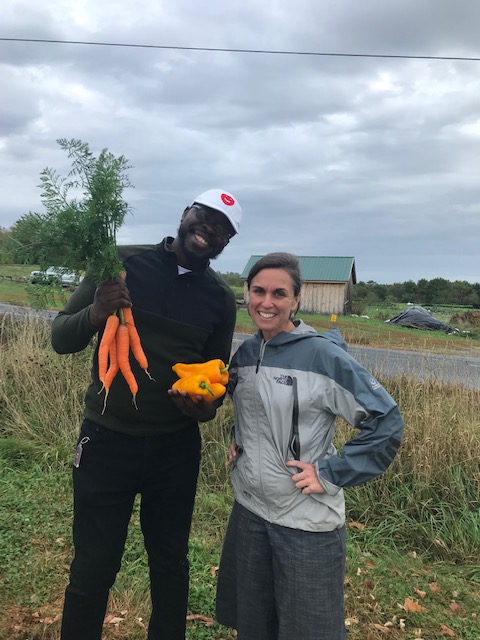Across the country over the past year, monumental job loss due to the COVID-19 pandemic created more need than ever for food basics. However, some of the people that work in Maine’s robust charitable food network have emerged from an extra difficult year feeling hopeful for the future.
The causes of food insecurity are complex, but it is broadly defined as not having dependable sources of food for a healthy and active lifestyle. There are many reasons this happens, like living in a rural area where stores have closed, which then creates unpredictable supply or pricing. People might not have reliable transportation to get to the store, or jobs adequate in their area that pay a living wage for work.
In Maine, there is an extensive and dedicated network of people working to solve this problem up and down the food supply chain, and they operate with the knowledge that people are not food insecure for lack of food; there’s plenty out there. It just has to get to people.
One of the most valuable aspects of a community food pantry is that there are no barriers to entry.
“If you are coming into our space, you obviously need help and that’s what we’re here to do,” said Linda Sandefur, co-manager of the Ecumenical Food Pantry in Newcastle. “We welcome everyone.”
When Sandefur started working there four years ago, all of the produce they received was from a major grocery chain. While being clear that this is a valuable, nourishing source of food, Sandefur said that a grocery store donation is often “near the end of its shelf life. It needs trimming, freshening up.”
Fresh produce in pantries mostly comes from three sources: surplus from grocery stores, surplus from commercial farms, and from food bank farms, a nonprofit model that grows food exclusively for use in pantries.

Young farmers from the Central Lincoln County YMCA Daycare Program work the school garden at Twin Villages Foodbank Farm. Courtesy of Megan Taft.
The Ecumenical Food Pantry works closely with Twin Villages Foodbank Farm, located on the Coastal Rivers Conservation Land Trust in Damariscotta. Everything produced on the farm, about 50,000 pounds per growing season, is donated to food banks.
“During the growing season, our families and neighbors have the same level of produce that could be at any farmer’s market in the state,” said Sandefur. “Our job at the pantry is relatively easy: we set it up like a mini farmer’s market and it’s beautiful. It’s really exceptional.” She also appreciated the predictability of volume and product, a rare occurrence in the charitable food world.
Twin Villages is one of a few Maine-based nonprofits to receive a Healthy Food Fund grant from the Harvard Pilgrim Foundation over the past few years. These grants provide $565,000 over three years to Maine nonprofits that are dedicated to getting healthy food to people in need.
“Our healthy food partners are the resources needed for communities – they are on the ground, doing the work,” said Karen Voci, president of the Harvard Pilgrim Health Care Foundation. “Our partners have developed a personal connection to their communities and they know the most efficient ways to get this food into pantries and kitchens and on to people’s plates.”

Volunteers and staff at the Ecumenical Food Pantry in Damariscotta set up farmer’s market featuring produce from Twin Villages Food Bank Farm last summer. Courtesy Ecumenical Food Pantry
Twin Villages Foodbank Farm co-founder Megan Taft, who is also the Director of Diversity, Equity and Inclusion at the Good Shepherd Food Bank, said they used the grant money to pay staff to organize volunteer assignments at the farm or off site at other area farms, where they pick and transport surplus produce. Last year, Twin Villages gathered another 35,000 pounds of fresh produce this way, which was more than three times what they had projected before the pandemic.
“As a result of COVID, I saw people getting more innovative and eliminating barriers,” said Taft. She felt people in general were attuned to the level of need and looked for ways to help. Now those connections will continue to strengthen their network, which serves about 15 partners in Lincoln County in addition to the Ecumenical Food Pantry. Those partners range from after school programs to group homes and shelters, many of them sharing strategically placed hubs of cool storage to expand space.
“Chaos is just the nature of the network,” said Sandefur, as she explained the myriad pathways that valuable produce will travel to make sure it is used.
Another Healthy Food Fund grant recipient that gets fresh produce into pantries is Healthy Acadia, which has offices in Ellsworth, Machias and Calais. Healthy Acadia established the Downeast Gleaning Initiative in 2013. They gather surplus harvests from local farms, provide volunteer labor in exchange for produce and are establishing community gardens to serve as smaller food bank farms.
Katie Freedman is the Food Programs Director at Healthy Acadia. She said Harvard Pilgrim’s Healthy Food Fund grant was invested in staffing, which then allowed them to raise money from the community to purchase a long-needed transit van.
“The very next week, we got a call from Catholic Charities in Aroostook County,” Freedman said. “They had 6,000 pounds of sweet potatoes and red onions. We would not have been able to pick up that produce with a sedan.”
Freedman said they experienced a similar explosion of connections like the ones Twin Villages Foodbank Farm made during the pandemic year.
“We provide a service to farmers,” said Freedman. “They could rototill and rip up the crop, but it definitely makes people feel better to know that it is feeding people in the community and it’s the right thing to do.”
Over the last year, there has also been “a lot of food without a home, so to speak,” said Regina Grabovac, Healthy Acadia’s Food Programs Manager for Washington County. “Truckloads would be coming up from Mexico, but they had no place to go because grocery stores and restaurants had closed.”

Downeast Gleaning Initiative volunteer Cynthia helps harvest surplus lettuce at Bar Harbor Farm last spring. This produce went to Bar Harbor Food Pantry and Loaves and Fishes Food Pantry in Ellsworth. Courtesy of Healthy Acadia.
Grabovac’s day-to-day tasks, just like her counterpart Rachel Emus’s in Hancock County, involves a lot of time on the phone, directing produce to where it is needed, like senior living centers or health clinics. Emus says they serve about 10,000 people a month through all of the Gleaning Initiative’s partnerships.
Washington County has the highest unemployment rate and food insecurity rate in the state. It also lacks the diverse farm systems in Hancock County. So Grabovac’s job includes establishing more community gardens that can act as food bank “farms.” She has helped the University of Maine at Machias and the UMaine Cooperative Extension set up gardens on their properties.
Twice a week, Grabovac is at Washington Academy’s garden in East Machias, where around two dozen high school students plan to produce close to 4,000 pounds of food this year. Grabovac said seeing young people create deeper relationships with nature and their food is one of the best parts of her job.
In Newcastle, Sandefur said that after seeing a spike in visitors during the spring and summer of 2020, weekly attendance at the Ecumenical Food Pantry has been going down. She has a few theories, one being that everything is working the way it is supposed to.
“As hard as we work to make the ‘shopping’ experience a friendly, fun, non-stressful experience, the food pantry is not the place people want to be,” she said. “They would rather be at the store or market with everyone in the community. So I think all the pandemic aid, federal, state and local, has gotten to the intended people. It’s been an amazing effort and I think it has worked. I am hopeful that this is a long-term improvement.”

Comments are not available on this story.
Send questions/comments to the editors.

